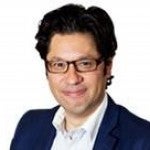Hemant Shah
Co-Founder and Chief Executive Officer, RMSSince co-founding RMS in 1989 as a spin-out from Stanford University, Hemant Shah helped build RMS from five colleagues working from his apartment to more than 1,000 professionals providing the world's leading catastrophe modeling solutions to the global insurance and financial services sector. He is widely recognized within the global risk industry as a proactive and influential leader, and has been named “Most Admired CEO” (San Francisco Business Times, 2014); one of the "100 Most Powerful People in the Insurance Industry"(Insurance Newscast, 2005–2011); "Most Influential Person of the Year" (Reactions Global Awards, 2011); and one of the "Top 40 Most Influential" (Global Reinsurance, 2008), among other accolades. Hemant serves on the board of directors of the Casualty Actuarial Society and Praedicat, Inc., as well as on the board of overseers of St. John's School of Risk Management and Actuarial Science (College of Insurance). He is a Director of the RAND Center for the Study of Terrorism Risk Management Policy, a Director on the board of RAND's Institute for Civil Justice, and a Director of the Singapore-based Institute for Defense and Strategic Studies. Hemant is also a Henry Crown Fellow of the Aspen Institute, and part of the Aspen Global Leadership Network.




